Record containerized cargo activity and advancement of infrastructure enhancements highlight achievements at seaports of Florida’s Atlantic Coast.
As the Florida Ports Council continues to tout the open-for-business capabilities of Sunshine State ports, including in providing efficient alternatives to congested supply chains via the U.S. West Coast, Florida Atlantic seaports are handling more cargo than ever while several are at last enjoying a return of cruise business that had metaphorically run aground due to the COVID-19 pandemic.
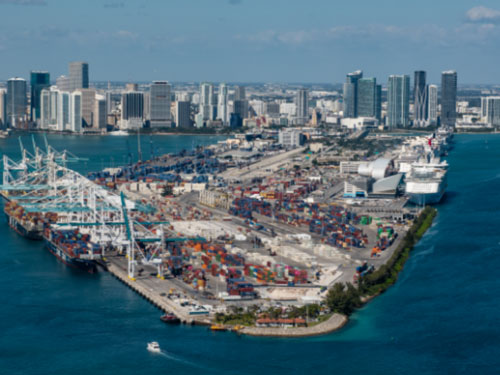
Port Miami
Miami-Dade County’s PortMiami handled a record 1,254,064 twenty-foot-equivalent units of containerized cargo in its fiscal year ended Sept. 30, 2021, up 17.6 percent from its fiscal 2020 TEU count, while reporting no congestion or delays along its 50-foot-deep main shipping channel.
The deep channel, super-post-Panamax cranes, and direct tunnel connection between the island seaport and Interstate highway system are among more than $1 billion in infrastructure enhancements completed over the past several years at PortMiami, which in September augmented its calls by global alliance mega containerships with welcoming of its first Turkey service, provided by ZIM Integrated Shipping Services.
Meanwhile, Juan Kuryla, who served 23 years at PortMiami, the past seven as director, has departed for a senior vice president position with Norwegian Cruise Line Holdings. Deputy Port Director Hydi Webb, who joined the port in 1992, takes over as interim director while a global search for a successor gets launched.
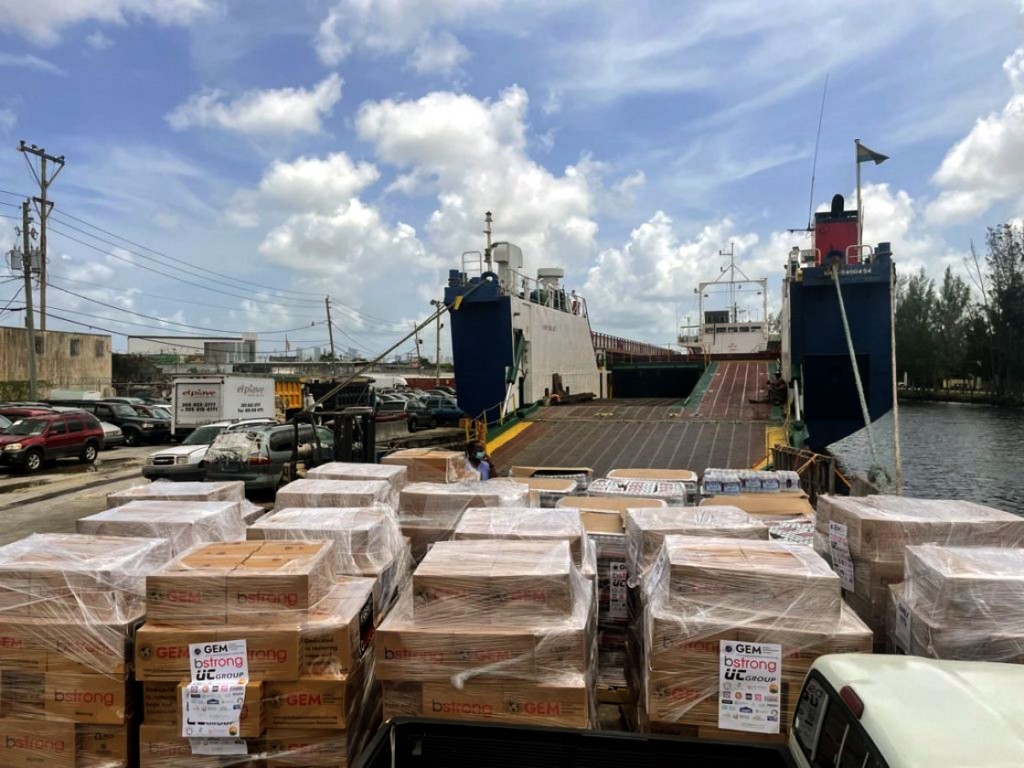
Port of Miami River
Replacement by the Florida Department of Transportation of a 93-year-old bascule bridge over the Miami River at Southwest First Street – marked by a January ceremony – is easing vessel movements at the Port of Miami River, which furnishes a critical link between South Florida and scores of shallow-draft ports throughout the Caribbean region. FDOT is moving forward with additional work replacing vintage bridges over the river, with the Northwest 17th Avenue span next on the list.
In another development related to facilitating safe vessel movement along the river’s 5 1/2-mile-long, 15-foot-deep channel, the U.S. Army Corps of Engineers has accepted the Miami River Marine Group’s position to deny a shoreline structure development plan that could have imposed navigational restrictions.
Stepping up in the aftermath of the September earthquake devastation in Haiti, Seacoast Shipping dispatched more than $5 million in donated tents, water, food, and other relief supplies from its Miami River terminal.
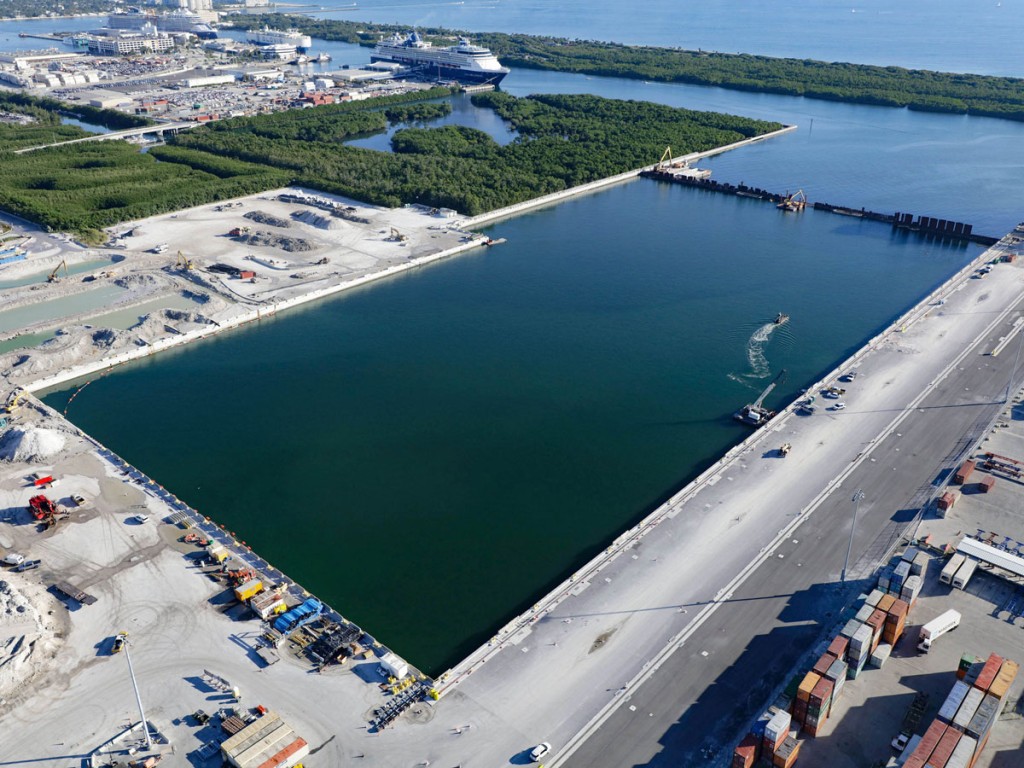
Port Everglades
The largest infrastructure project in the 94-year history of Broward County’s Port Everglades has passed the 75-percent-complete milestone, as the $471 million endeavors to expand the Southport containerized cargo area is on target to be finished in late 2023. The undertaking, which is generating more than 3,000 construction jobs, is the cornerstone of a comprehensive $3 billion, 20-year master/vision plan.
By lengthening Southport’s existing turnaround area to 2,400 feet from 900 feet, the port is creating additional berthing to be served by a growing contingent of super-post-Panamax ship-to-shore gantries operating on extended crane rails.
Three of the big new cranes, costing $13.8 million each, were commissioned in early 2021, and the port has ordered three more such units for late 2023 delivery. The cranes are capable of loading and unloading ships with containers stacked nine high from the deck and can reach 22 containers across to the outer ship rail.

Port of Palm Beach
The Port of Palm Beach is embarking on a $26 million project to significantly boost its rail capabilities. With a U.S. Department of Transportation Port Infrastructure Development Program grant covering half the cost, the port is adding five intermodal rail tracks, building new entrance gates, and installing radiation portal monitors in an effort aimed at more than doubling the port’s annual rail traffic capacity to nearly 100,000 TEUs while taking an estimated 29,000 truck trips a year off highways. Also, the port’s existing rail system is undergoing a track upgrade.
Other projects getting underway this year include warehouse replacements, a new cement terminal, and a $2.9 million container yard fortification entailing replacing asphalt with roller-compacted concrete.
The port, which continues to count Tropical Shipping as its leading tenant, is proceeding with the development of a strategic master plan to provide development options for optimizing cargo throughput and expanding megayacht berthing.
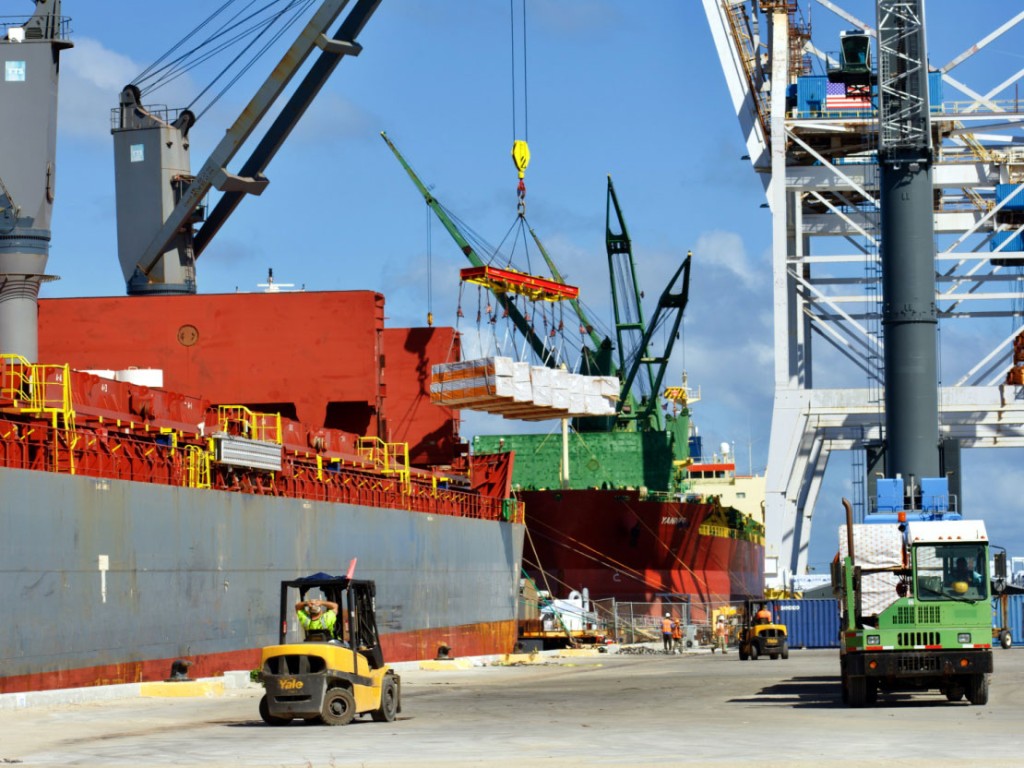
Port Canaveral
Noncontainerized imports of lumber and construction materials, to meet demands of Central Florida’s building boom, are among goods driving increasing volumes at Port Canaveral, which diversifies its revenues by serving as a hub for the return of recovered SpaceX rocket boosters. The 13,752 bundles of lumber discharged in June from Baltic Shipping’s Rubina by stevedores from Enstructure LLC unit Ambassador Services International represent the port’s highest such amount ever handled from a single vessel.
With the trend for breakbulk shipments to fill the void for hard-to-find containers, Port Canaveral has begun to see more food products arriving on noncontainerized vessels, including those bringing prepackaged, palletized loads of frozen french fries from Belgium.
A $48 million cargo berth rehabilitation and modernization project is proceeding at Port Canaveral, thanks partly to a $14.1 million U.S. Department of Transportation Port Infrastructure Development Program grant, while a 34-acre expansion of cargo area is being eyed.
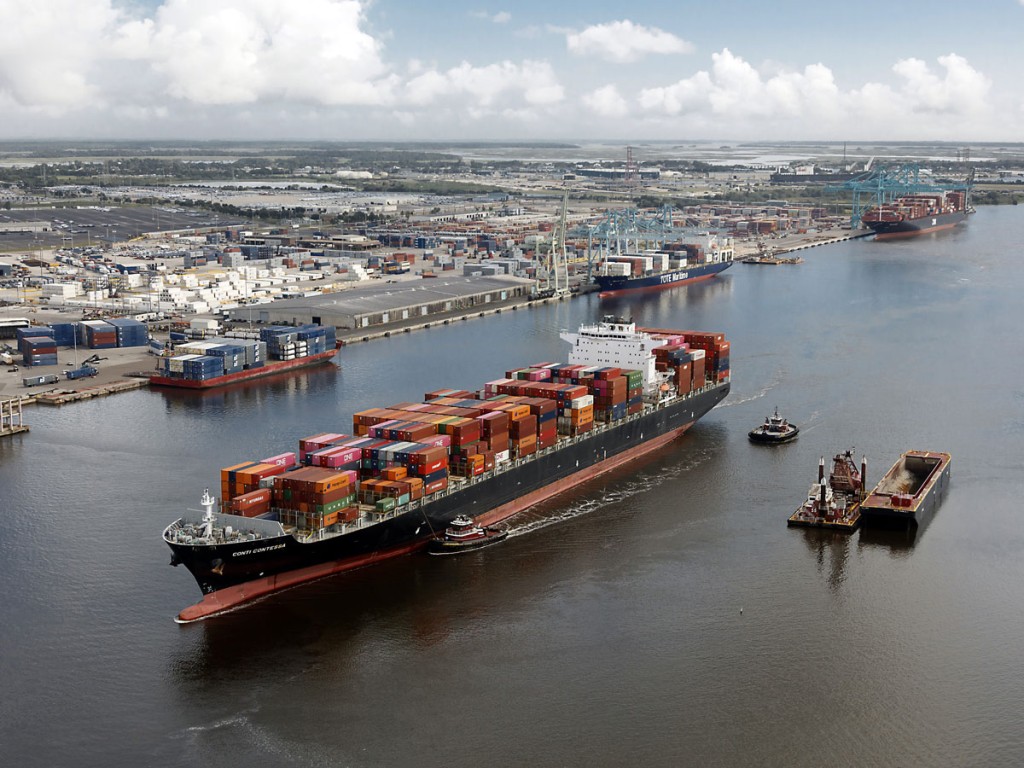
JAXPORT
In Northeast Florida, the Sunshine State’s busiest container port is moving record volumes while nearing completion of deepening of Jacksonville’s federal shipping channel to 47 feet through the Jacksonville Port Authority’s Blount Island Marine Terminal. The completion is on target for June – more than three years ahead of the original schedule.
JAXPORT handled an all-time high of 1,407,310 twenty-foot-equivalent container units in its fiscal year ended Sept. 30, up 10.2 from a year earlier.
In coordination with the deepening project, $100 million in berth enhancements are proceeding at Blount Island, to furnish simultaneous berthing for two post-Panamax vessels and enable the SSA Jacksonville Marine Terminal to handle as many as 700,000 TEUs annually, raising JAXPORT’s total TEU capability above 2 million TEUs. Three new super-post-Panamax cranes are slated for delivery before yearend. Also by the end of 2022, about 31 paved acres are to be added to the Blount Island operating area.
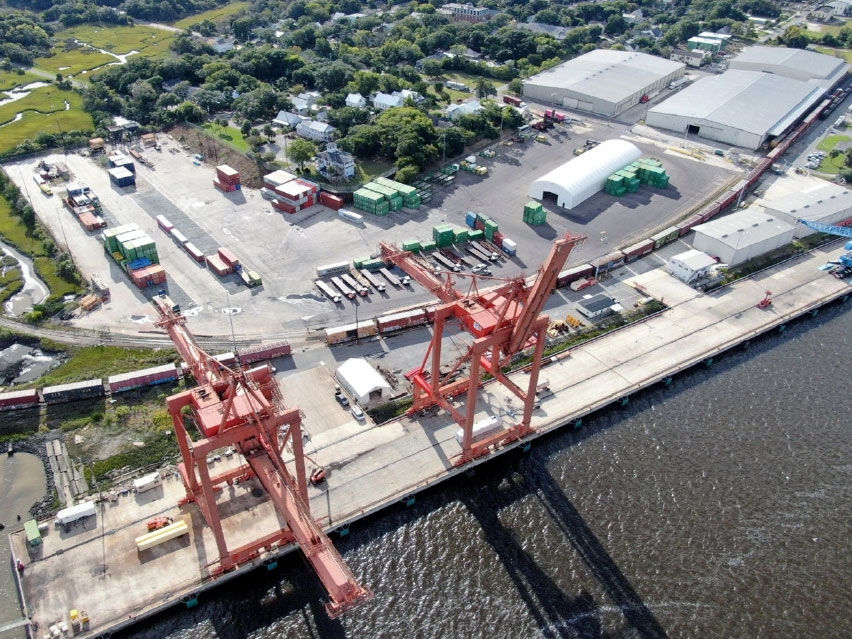
Port of Fernandina
Since Worldwide Terminals Fernandina LLC entered a 35-year agreement in late 2018 with the Ocean Highway and Port Authority of Nassau County to operate the Port of Fernandina, annual cargo activity at Florida’s northernmost seaport has grown substantially, with containerized tonnage up 175 percent and breakbulk tonnage increasing 61 percent, led by a 580 percent gain in wood pulp volume.
Located just to the south of the Florida-Georgia line, the Port of Fernandina, which recently deepened draft to 40 feet along with its berths, now boasts regular vessel services from four major breakbulk carriers and offers connections to Europe, Asia, Brazil, and the West Coast of South America.
The Port of Fernandina commissioned a pair of ship-to-shore gantries in 2020, and it is continuing to augment its 380,000 square feet of on-dock and off-port warehouse space offerings, with an eye toward attracting further ship calls as vessel operators seek uncongested alternatives.





